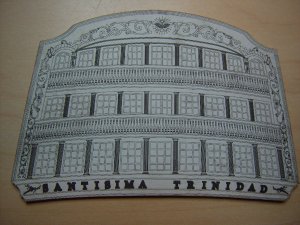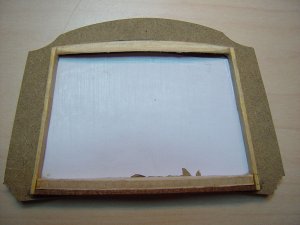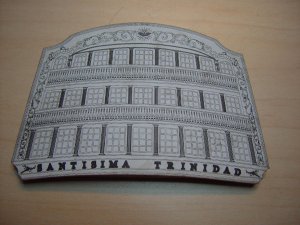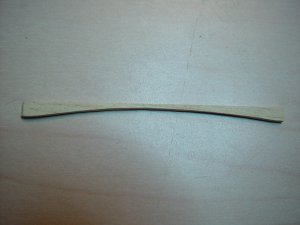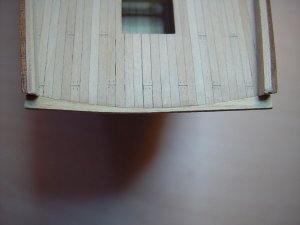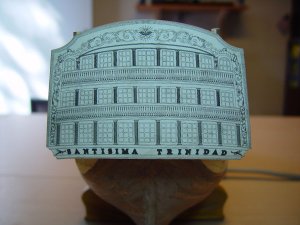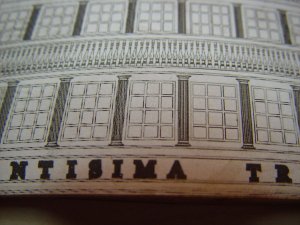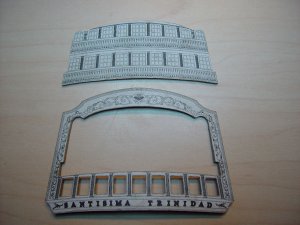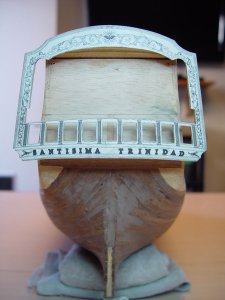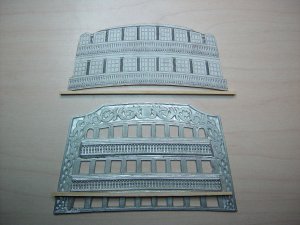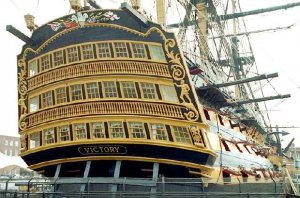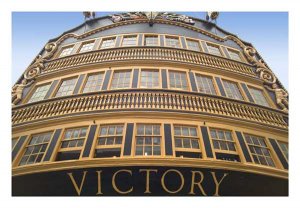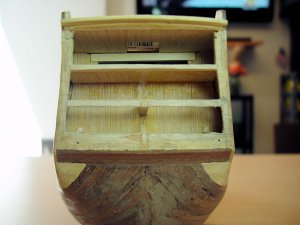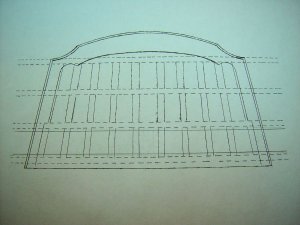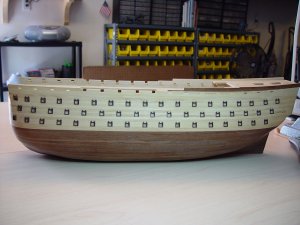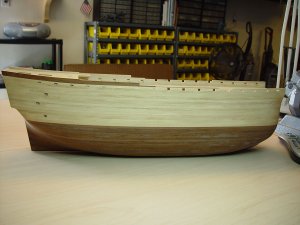Hi,
I’m back again. As promised, this is the first installment of my scratch build stern section of the Santisima Trinidad. If you remember back on page 7; about 6 posts down, I had some concerns on the stern. Donnie had to cut away part of his deck railing in order to get the stern to mount properly. After checking the parts to the drawing, I found the parts were off by about 2mm.
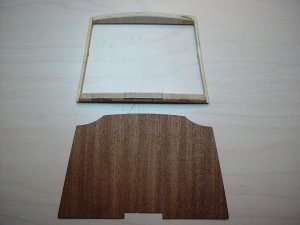
To solve the problem, I made an extension that would push the stern plate out to the proper placement and therefore no deck railing modification would be required.
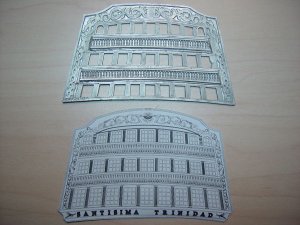
Since no one really knows what the ST stern looked like when she sank, I have decided to use Joaquin Rodriguez Crespo’s rendition of what he thought it looked like in 1778. This closely follows the metal plate that came with the kit.
Looking at the stern, there is a lot of work required to replicate the metal plate to give it better definition. My approach will be to break it down into manageable sections. There is the initial layout, window frames, the window panels, doors, the columns between the windows, the platforms (balconies), railings, balusters, lettering (Santisima Trinidad), borders and the decorations.
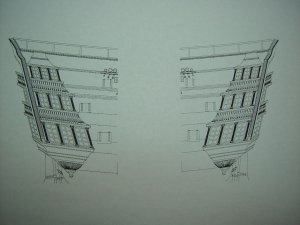
These same sections will hold true for the quarter galleries as well. There may be other sections but these are the ones that stand out the most.
SECTION 1 - Layout
One of the biggest problems I have had with the layout, is the placement of the windows. The metal plate from the kit is pretty beat up. So laying it on the stern back plate and tracing the windows is a hugh waste of time. It would be very labor intensive to correct all the errors.
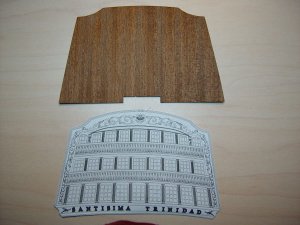
I took the drawing and reduced it to the 1:90 scale and printed it out. Then I cut it out to use as a template. The cutout will be glued to the back plate using Titebond. One point I need to make, I will have to make a new back plate. As you can see the rendition has a slightly different shape to it... just enough to warrant a new back plate. Once the windows are cut out, I can soak it in water to remove the balance of the template. As you can see, this will leave a very clean window arrangement.
This is all I have for now. I will come back with the results of the window cutting.
Later,
Don
I’m back again. As promised, this is the first installment of my scratch build stern section of the Santisima Trinidad. If you remember back on page 7; about 6 posts down, I had some concerns on the stern. Donnie had to cut away part of his deck railing in order to get the stern to mount properly. After checking the parts to the drawing, I found the parts were off by about 2mm.

To solve the problem, I made an extension that would push the stern plate out to the proper placement and therefore no deck railing modification would be required.

Since no one really knows what the ST stern looked like when she sank, I have decided to use Joaquin Rodriguez Crespo’s rendition of what he thought it looked like in 1778. This closely follows the metal plate that came with the kit.
Looking at the stern, there is a lot of work required to replicate the metal plate to give it better definition. My approach will be to break it down into manageable sections. There is the initial layout, window frames, the window panels, doors, the columns between the windows, the platforms (balconies), railings, balusters, lettering (Santisima Trinidad), borders and the decorations.

These same sections will hold true for the quarter galleries as well. There may be other sections but these are the ones that stand out the most.
SECTION 1 - Layout
One of the biggest problems I have had with the layout, is the placement of the windows. The metal plate from the kit is pretty beat up. So laying it on the stern back plate and tracing the windows is a hugh waste of time. It would be very labor intensive to correct all the errors.

I took the drawing and reduced it to the 1:90 scale and printed it out. Then I cut it out to use as a template. The cutout will be glued to the back plate using Titebond. One point I need to make, I will have to make a new back plate. As you can see the rendition has a slightly different shape to it... just enough to warrant a new back plate. Once the windows are cut out, I can soak it in water to remove the balance of the template. As you can see, this will leave a very clean window arrangement.
This is all I have for now. I will come back with the results of the window cutting.
Later,
Don
Last edited:




